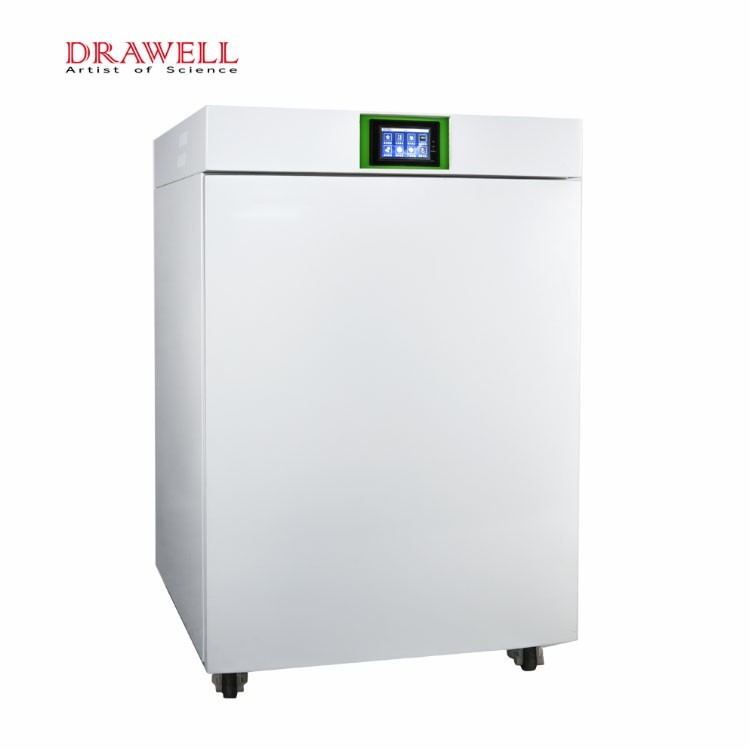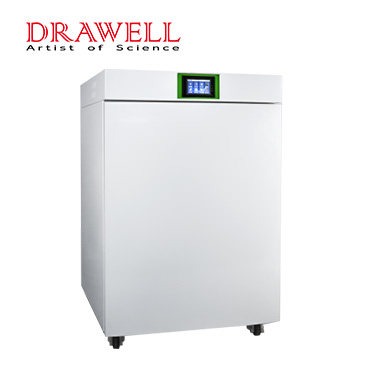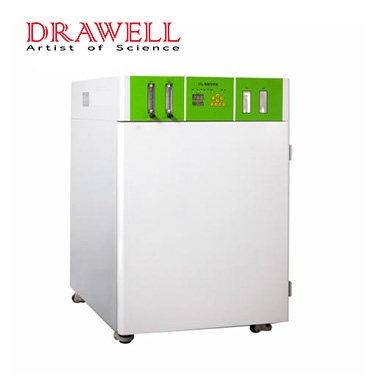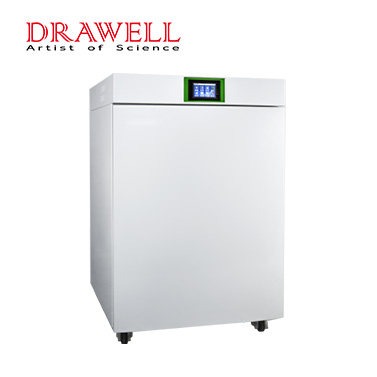CO2 incubators are widely used in the research and production of medicine, immunology, genetics, microbiology, agricultural science, and pharmacology. It has become one of the most commonly used conventional instruments in laboratories in the above fields. It stimulates the growth environment of cells/tissues in organisms by simulating in the incubator box, such as constant pH (pH: 7.2-7.4), stable A device for culturing cells/tissues in vitro with high temperature (37°C), high relative humidity (95%), and stable CO2 level (5%).
The CO2 incubator mainly controls three basic variables related to the simulated in vivo environment: stable CO2 level, temperature, and relative humidity. There are many types of CO2 incubators so how can you choose a carbon dioxide incubator suitable for cell culture? Before choosing a CO2 incubator, you need to consider the following factors to have a stable cultivation environment:
Temperature Control
1. Air Jacket Heating VS Water Jacket Heating
Maintaining a constant temperature in the incubator is an important factor in maintaining healthy cell growth. When purchasing a CO2 incubator, there are two types of heating structures to choose from: air jacket heating and water jacket heating. We also can call them air jacket CO2 incubators and water jacket CO2 incubators.
The air jacket CO2 incubator’s heating system directly heats the gas through the heater in the box. The design of an air jacket CO2 incubator can quickly restore the temperature stability in the box under the condition of frequent temperature changes caused by frequent opening and closing of the box door. A water-jacketed CO2 incubator maintains a constant temperature by surrounding the inner box with a separate hot water compartment. The hot water circulates in the box by natural convection, and the heat is transferred to the inside of the box by radiation to keep the temperature constant.
While both heating systems are accurate and reliable, each of them has its own advantages and disadvantages.
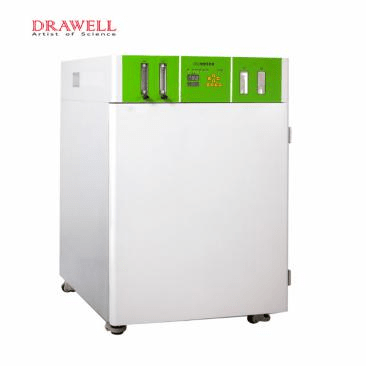
Choosing a water-jacketed CO2 incubator
The unique water-jacketed design of the CO2 incubator has its advantages: water is a good thermal insulator, and in the event of a power failure, the water-jacketed system can more reliably maintain the temperature accuracy and stability in the incubator for a long time. The time to maintain a constant temperature is 4-5 times that of an air jacket system. If your experimental environment is not stable such as limited electricity availability, or frequent power outages and you need to maintain stable culture conditions for a long time, a water-jacketed carbon dioxide incubator is your best choice.
Choosing an air jacket CO2 incubator
Compared with the water jacket CO2 incubator, the air jacket CO2 incubator has the characteristics of faster heating and faster temperature recovery than the water jacket CO2 incubator. It is especially beneficial for short-term cultivation and cultivation that requires frequent opening and closing of the door. In addition, the air-jacketed design of the CO2 incubator is simpler for the user than the water-jacketed type (the water-jacketed CO2 incubator needs to add water, empty and clean the water tank, and monitor the operation of the water tank frequently). Thus, based on the above conditions, an air jacket CO2 incubator is your best choice.
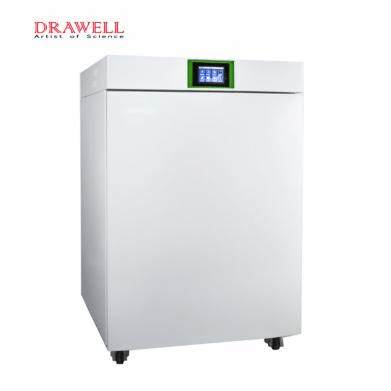
2. CO2 Sensors: Infrared Sensor (IR) VS Thermal Conduction Sensor (TC)
CO2 concentration detection can be measured by two control systems: infrared sensor (IR) or thermal conductivity sensor (TC). When the door of the carbon dioxide incubator is opened, CO2 leaks from the box. Meanwhile, the sensor will detect the decrease in CO2 concentration and make a timely response, re-injecting CO2 to restore it to the original preset level.
The thermal conductivity sensor (TC) of the CO2 incubator works by monitoring the CO2 concentration. It is measuring the change in resistance between two thermistors, one exposed to the enclosure environment and the other enclosed.
An infrared sensor (IR) as another optional control system has a more precise CO2 control capability than the TC system. It detects CO2 levels through an optical sensor.
3. Choosing a CO2 incubator with TC or IR control system
A disadvantage of the TC control system is that changes in chamber temperature and relative humidity can affect the accuracy of the sensor. When the box door of the CO2 incubator is frequently opened, not only the CO2 concentration but also the temperature and relative humidity will fluctuate greatly. Thus, it affects the accuracy of the TC sensor. This control system is not suitable when precise culture conditions and frequent opening of the CO2 incubator door are required.
Because the IR system is not affected by changes in temperature and relative humidity, it is more accurate than the TC system. Besides, it is especially suitable for cell cultures that require frequent openings of the incubator door. However, this system is more expensive than the TC system, so it must be considered in conjunction with the CO2 incubator price.
Relative Humidity Control
It is very important to control the relative humidity in the incubator. Maintaining a sufficient humidity level can ensure that the culture will not fail due to excessive drying. Larger carbon dioxide incubators use steam generators or sprayers to control relative humidity levels, while most medium and small incubators generate moisture through evaporation from humidity pans (the relative humidity produced by them levels up to 95-98%).
Some incubators have a humidity reservoir that holds water on the heated control panel to enhance evaporation. This reservoir can increase relative humidity levels by up to 97-98%. However, this system is also more complicated, and some unpredictable problems will also appear during use due to the increase of the complex structure.
Microprocessor Control System
Every user hopes that the instrument used can be convenient and easy to use. The application of a micro-processing control system and other functional accessories (such as high-temperature automatic adjustment and alarm device, CO2 alarm device, password protection setting, automatic calibration system, etc.) It makes the operation and control of the carbon dioxide incubator very simple. The microprocessor control system is the operating system to maintain the steady state of temperature, humidity, and CO2 concentration in the incubator.
For example, the PIC microprocessor control system can strictly control the gas concentration and reduce its loss to ensure a constant culture environment and can ensure that the temperature in the box is accurate during the long-term culture process, and has an LED display, which can be set, Corrected for temperature and CO2 concentration.
Although the names of different micro-processing systems are different, their principles and control effects are not much different. You don’t need to pay too much attention to the differences in their names when purchasing. The key is to feel that they are convenient to use, easy to operate, and able to achieve required control accuracy.
In addition, the alarm system is also indispensable. It allows you to know the situation in the incubator in time and make a response, thereby minimizing the loss and ensuring the continuity of the experiment. Some incubators have sound/light alarm devices, which will automatically alarm when the temperature changes up to ±0.5°C or the CO2 concentration changes up to ±5%; some have an alarm display function for abnormal CO2 concentration. These devices are all designed for the convenience of users and to reduce the tedious experimental process.
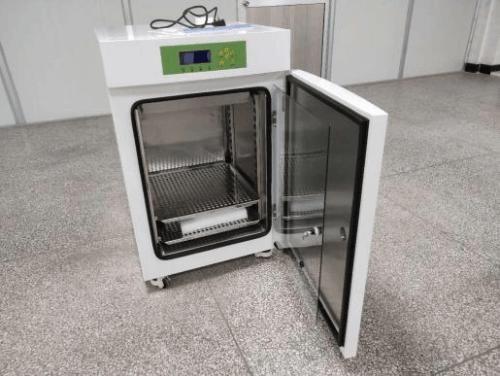
Pollutant Control
Contamination is a major factor leading to cell culture failure. Therefore, manufacturers of carbon dioxide incubators have designed a variety of different devices to reduce and prevent contamination. The main way is to minimize the areas and surfaces where microorganisms can grow. Combined with the automatic decontamination device it effectively prevents the generation of pollution.
For example, because CO2 incubators are sometimes accompanied by mold growth during use, to ensure that the incubator is free from contamination and ensure the biological cleanliness of the instrument box, some companies have developed and designed enhanced CO2 incubators with ultraviolet cleaning functions; There is also a unique copper shell HEPA filter designed by the company that can filter the air in the incubator, can filter out 99.97% of particles above 0.3um, and can effectively kill microbial particles that are blocked in the filter during filtration.
Moreover, if you want to know how to clean CO2 incubators, please click here.
Conclusion
The above are 4 key factors that need to be considered when choosing an ideal CO2 incubator. Please be sure to consider it comprehensively. Hope this article is helpful for you to choose a suitable CO2 incubator!

